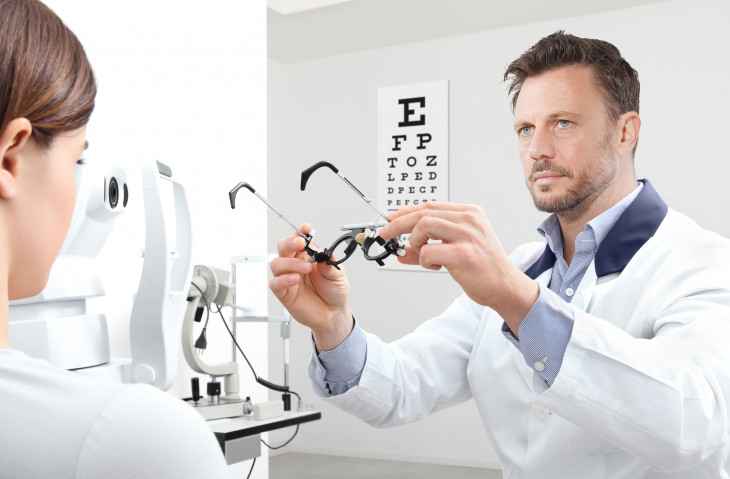Exploring the Latest Technical Developments in Optometry and What They Mean for Optometrists
From the precision of Optical Coherence Tomography to the nuanced understandings provided by AI-driven analysis devices, these developments are setting brand-new standards in patient assessment and therapy. As these improvements permeate the method, eye doctors are faced with the challenge of welcoming these tools to enhance patient outcomes.
Technologies in Diagnostic Equipment
Progressing the field of optometry, advancements in analysis tools have changed the means eye treatment specialists assess and identify eye problems and visual impairments. The past years has actually observed considerable technical improvements, allowing more detailed and accurate examinations. Optical Comprehensibility Tomography (OCT), for instance, supplies high-resolution cross-sectional pictures of the retina, enabling the very early detection of conditions such as glaucoma and age-related macular deterioration. This non-invasive imaging strategy has become important in contemporary optometric technique.
An additional trick innovation is the intro of innovative corneal topography systems, which map the surface curvature of the cornea with accuracy. These tools are specifically beneficial for suitable contact lenses and identifying corneal disorders. Electronic retinal imaging has actually changed traditional ophthalmoscopy, offering thorough, breathtaking views of the retina that assist in comprehensive aesthetic examinations.
The development of wavefront aberrometry has actually likewise been critical, enabling the analysis of refractive errors with unparalleled accuracy (Eye Doctor Optometrist). This innovation assists in customizing corrective lenses and enhancing surgical results for refractive surgeries. Jointly, these diagnostic improvements empower optometrists to provide premium person treatment, guaranteeing early intervention and tailored treatment techniques, ultimately enhancing visual health and wellness outcomes
AI in Individual Management
Structure on the foundation of advanced diagnostic tools, the incorporation of fabricated knowledge (AI) in client administration represents a transformative jump for optometry. AI systems are progressively employed to enhance effectiveness, precision, and personalization in client treatment. By assessing substantial amounts of data, AI can identify patterns and anticipate potential ocular conditions, making it possible for eye doctors to tailor interventions better. This capability is vital in handling chronic eye illness such as glaucoma and diabetic person retinopathy, where very early discovery and continuous surveillance are key.
Additionally, AI-driven platforms help with structured individual communications and management processes. Automated organizing, virtual examinations, and personalized follow-up plans not just enhance client contentment but likewise optimize time management for professionals. These systems can triage patients based on the urgency of their problems, making sure that those in critical demand receive timely interest.
Moreover, AI boosts decision-making by supplying eye doctors with evidence-based referrals and treatment paths. By integrating information from electronic health documents, AI tools supply understandings that inform professional decisions, lowering the danger of mistakes and enhancing client end results. As AI continues to develop, its role in patient administration will likely expand, reshaping the landscape of optometric treatment.
Advances in Retinal Imaging
In the world of optometry, retinal imaging has observed amazing technical improvements that are improving diagnostic abilities and patient care. Developments such as Optical Coherence Tomography (OCT) and fundus digital photography have transformed how eye doctors visualize and analyze the retina.
Boosted imaging methods like OCT angiography are further refining diagnostic precision. Eye Doctor Optometrist. Such improvements assist in the identification of min retinal modifications that could indicate condition development.
Moreover, improvements in navigate to this site expert system are boosting retinal imaging by enabling computerized analysis of huge datasets. These systems assist eye doctors in identifying patterns a sign of pathology, thus enhancing diagnostic precision and efficiency. Jointly, these innovations are changing retinal imaging right into a cornerstone of modern-day eye treatment, boosting results and expanding therapeutic possibilities.
Teleoptometry's Growing Function
Teleoptometry is increasingly ending up being an essential component of eye treatment, driven by advancements in data and diagnostic devices. As additional info optometry accepts electronic change, teleoptometry facilitates remote examinations, permitting optometrists to expand their services beyond conventional limits. This is particularly beneficial in underserved and country areas where accessibility to specialized eye treatment is typically restricted. By leveraging high-resolution video clip conferencing and progressed retinal imaging, optometrists can perform detailed eye exams from afar, guaranteeing prompt diagnosis and therapy.
The assimilation of expert system (AI) more enhances teleoptometry, enabling the analysis of visual information and helping in the discovery of eye problems such as glaucoma and diabetic retinopathy. AI-powered formulas can swiftly translate intricate imaging information, providing optometrists with valuable insights that bolster clinical decision-making.
Furthermore, teleoptometry supports continuity of care via smooth assimilation with digital wellness records (EHRs), permitting optometrists to keep extensive client backgrounds. This makes certain that clients receive individualized and constant care also when talking to various practitioners.
Despite these advantages, challenges stay, including making sure information protection and handling individual expectations. Teleoptometry stands for a substantial stride in the direction of more easily accessible, effective, and patient-centered eye treatment. As technology evolves, its function is positioned to expand even more.

Future Trends in Eye Care
A myriad of innovative trends is readied to improve the future of eye treatment, driven by technical developments and the evolving requirements of individuals. One considerable pattern is the assimilation of man-made intelligence (AI) in diagnostics, which assures to improve the precision and performance of eye evaluations. AI formulas can examine vast quantities of information from retinal images, potentially spotting conditions like diabetic person retinopathy and glaucoma earlier than typical methods.
Additionally, customized medication is obtaining traction in optometry, with genetic testing informing customized therapy strategies. This strategy aims to maximize patient outcomes by customizing interventions to private genetic profiles. Wearable modern technology, such as clever contact lenses, is also imminent, supplying real-time tracking of intraocular stress or glucose degrees, thus giving continual insights right into ocular and systemic health and wellness.
The adoption of augmented truth (AR) and digital reality (VR) in training and client education Related Site is an additional emerging pattern. These innovations provide immersive experiences that can enhance understanding and abilities both for optometrists and individuals. As these fads develop, optometrists need to stay abreast of technical improvements to offer advanced care, guaranteeing enhanced patient end results and fulfillment in the vibrant landscape of eye care.
Conclusion

Collectively, these diagnostic developments equip eye doctors to provide premium person treatment, ensuring early treatment and tailored therapy approaches, eventually improving visual health and wellness end results.

As these modern technologies continue to evolve, optometrists have to adapt and include them into method, eventually optimizing workflow effectiveness and boosting the requirement of eye treatment delivered to individuals.